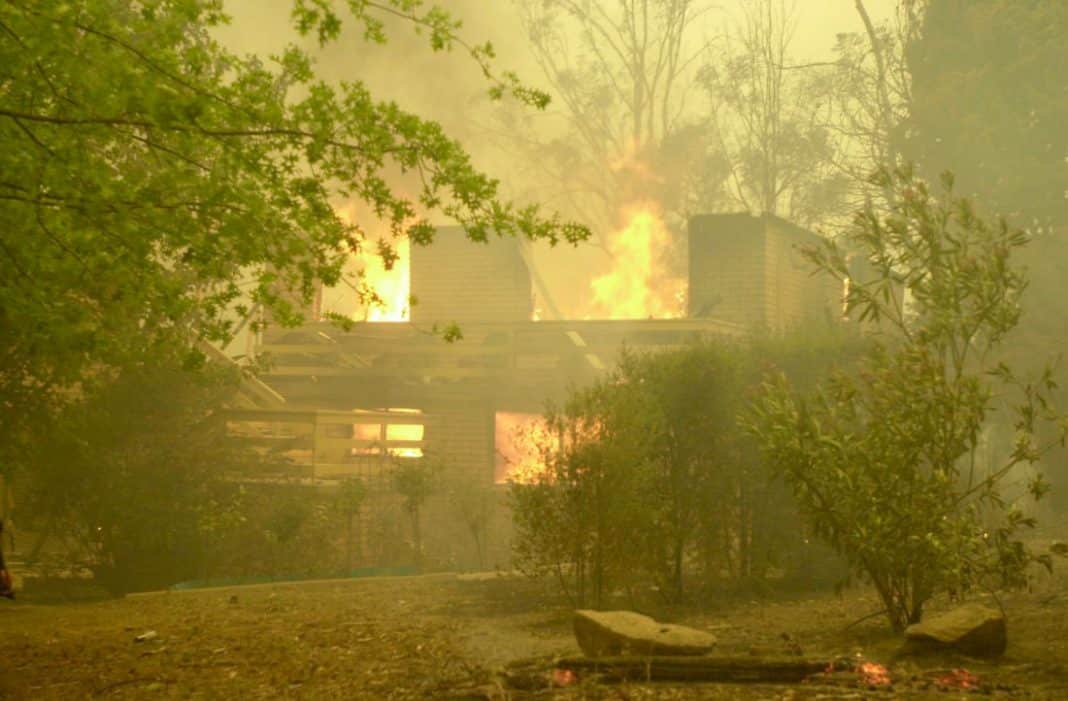Firefighters say 20 years on from the devastating Canberra bushfires there is still a shortage of equipment and trucks to deal with dangerous blazes.
Hundreds of Canberrans took part live and online in a ceremony on Wednesday evening at the bushfire memorial in Stromlo Forest Park marking the 20th anniversary of the January 2003 fires.
While a report by the ACT’s Multi Hazard Advisory Council found bushfire arrangements had “significantly improved” during the past two decades, firefighters say much more needs to be done.
“ACT Fire and Rescue remains short of equipment and trucks,” United Firefighters Union ACT secretary Greg McConville said.
“Despite the near disastrous incidents of defective fire trucks during the 2003 Canberra fires, the newest fire trucks procured for ACT Fire and Rescue suffer from the same faults of flammable plastic air intakes and unprotected brake lines, leaving firefighters and the community no better protected.”
He said there was also a shortage of firefighters.
“Between 2013 and mid-2016, no firefighters were recruited at all. In the 2018/19 financial year, only six were recruited.”
That has meant firefighters continued to undertake unacceptable levels of overtime and were being pressured into not taking their accrued leave to cover the gaps, he said.
As well, Canberrans were still waiting for a coroner’s inquiry into the 2020 Orroral Valley fires, which has been the subject of several delays but is now scheduled for April hearings.
ACT emergency services commissioner Georgeina Whelan said the territory had one of the fastest and best equipped services in Australia.
“All of that is co-designed with our membership and our union representation,” she told reporters in Canberra.
“Each and every member of our emergency services community has contributed to change and has contributed to growth, but we haven’t stopped … year-on-year we will strive to continue to improve and adapt to the change in our environment and the challenges that will face.”
Emergency Services Minister Mick Gentleman said the ACT community should have confidence in the territory’s agencies.
“Our emergency services agencies are more prepared for a bushfire emergency than ever before,” he said.
“Our emergency response to the Orroral Valley bushfire, storms and the COVID-19 pandemic show how the lessons learnt over the last 20 years have been implemented by the ACT government and by our community.”
Rural fire service volunteer Andrew Joyce told the ceremony the 2003 fires were a “watershed moment” for the ACT.
“We must learn from this tragic disaster to ensure that we are better prepared for the next disaster,” he said.
The ACT Multi Hazard Advisory Council report released last week noted climate change and the ACT’s growing population presented an ongoing risk that needed to be addressed.
The council called for better use of data and technology to help with prediction, risk mitigation, suppression and post-bushfire recovery as well as increased firefighting capabilities.
The report suggested better focus on the risks to the ACT’s flourishing northern and western edges.
On January 8, 2003, lightning ignited six bushfires in the Brindabella Ranges on both sides of the ACT-NSW border.
The bushfires made intense runs to the east through rural lands, plantations and nature reserves 10 days later and burnt into the western suburbs of Canberra.
Four people were killed and 435 injured, while 488 homes and 23 commercial premises were destroyed.
By Paul Osborne in Canberra



